What’s the difference between ACH and SWIFT?
Carlene Reyes
| June 30th, 2022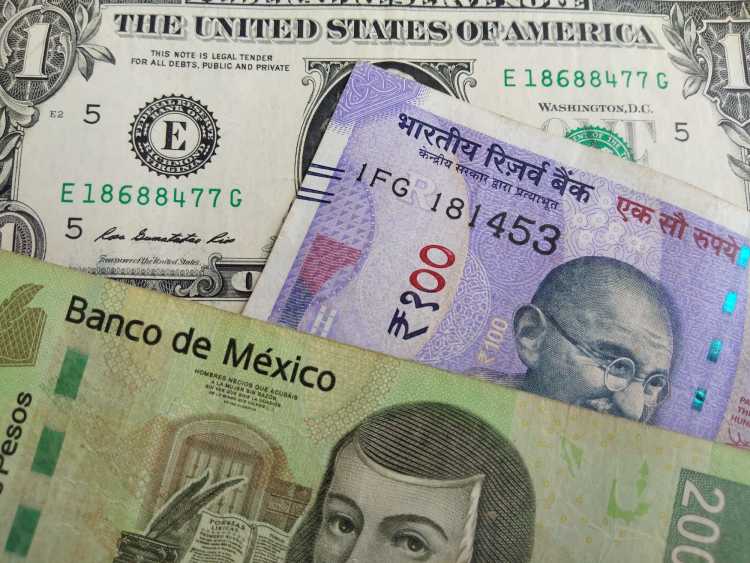
Whether your business has five or five hundred vendors, making sure they all get paid is a top priority. Vendors want to be paid on time and with as few hurdles as possible, and understanding your payment choices—and how they best fit the vendor—is important to providing a seamless payment experience.
Ahead, we’ll look at two common payment methods that provide consistent and secure experiences for vendors, and we’ll clarify the distinctions between them: ACH vs SWIFT.
Let’s start with the major difference between ACH and SWIFT.
Are ACH and SWIFT the same?
No, ACH and SWIFT are not the same. The main difference between ACH and SWIFT is that ACH is used to make payments within the U.S. and SWIFT is used to make payments internationally. Both payment methods deposit money directly into your vendor’s account in local currency — but that is where their similarities end.
For domestic payments, moving money around can be fairly simple. One of the fastest and low-cost options is ACH, which offers direct and same-day deposits. But ACH can only be used to pay your vendors who are operating within the U.S. (International ACH is an option, however, and we touch on the topic further below).
Making international payments can be a little trickier, so it’s great for peace of mind to use a standardized system like SWIFT to help with processing.
Suggested reading: A guide to cross-border payments
For a better understanding of the differences between ACH and SWIFT, let’s break down each payment method and explain how they work.
What's ACH?
The Automated Clearing House, or ACH, is a payment system used to complete direct payments into a bank account. ACH is governed and operated by the National Automated Clearing House (Nacha) and was first introduced as a way to quickly settle the ever-growing volume of paper checks in the late 1960s.
ACH’s popularity has quickly grown since then: The volume of ACH transactions has increased by more than one billion every year for the last seven years with B2B payments making up 20% of them.
Who uses ACH and how does it work?
There’s a good chance you’re already using ACH, even if you aren’t aware. Direct deposits, tax refunds and government benefits payments are all examples of one-time payments made using the ACH network. If your business pays for any recurring subscriptions or membership fees — where you’ve pre-authorized the same payment to occur at regular intervals over time — these are also examples of ACH payments.
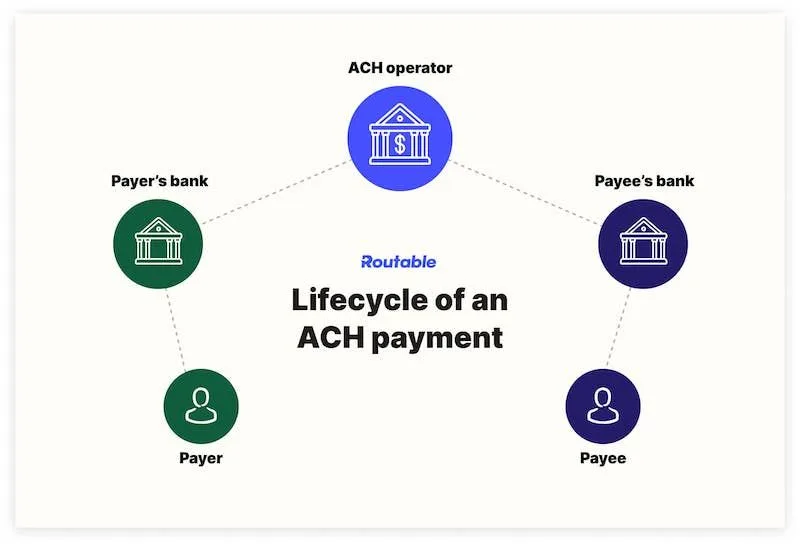
ACH payments occur in one of two ways: ACH debit and ACH credit.
An ACH credit is initiated by a sender of funds. You authorize your bank to push funds from your account into your vendor’s account.
For an ACH debit, the transaction is initiated by the payee. In the example of recurring payments, a magazine publisher would request funds to be pulled from your account into their account to cover the costs of your monthly subscription.
To make a payment to your vendor using ACH:
Collect account information from your vendor.To initiate an ACH payment, you need an account number and bank routing number from your vendor.
Provide these details to your bank.These details can be provided digitally and do not require you to go to a bank or provide them over the phone.
Your bank pushes funds from your account directly into your vendor’s account. Verify that you have the correct funds to cover the ACH amount before you approve the payment. This will prevent delays and additional fees.
Funds are deposited into your vendor’s account.Standard ACH clears within three to five business days. If you have a payment deadline, see if your bank offers faster Same Day ACH.
Advantages of ACH
Convenient. You won’t need to plan a visit to your bank to initiate ACH payments. They can be made from anywhere, as long as you have access to a computer or mobile device. What’s more, for businesses that pay through recurring payments, ACH debits make it simple to set up pre-authorization with your vendors.
Low cost. ACH is a low-cost option with fees typically being less than $1 per transaction. That can mean the difference of hundreds of thousands of dollars annually, especially if you’re processing high-volume AP (also known as mass payouts).
Saves time. Payments made using ACH can be made in batches — rather than individually — saving you and your team hours of time.
Disadvantages of ACH
Speed. ACH, while still faster than some legacy payment methods, doesn’t have an option for instant payments. ACH payments are settled in batches that are subject to various cut-off times throughout the day. That means that even if you opt for Same Day ACH, the funds take a few hours to settle in a vendor’s account.
Amount limitations. ACH payments are also subject to limits imposed by banks and these limitations will vary depending on daily and/or monthly limitations and even account history. For example, Chase allows for $10,000 per transaction and up to $25,000 per day, whereas Wells Fargo limits $5,000 per day depending on account history (Source).
What's SWIFT?
SWIFT stands for the Society of Worldwide Interbank Financial Telecommunications, and it's a cooperative society of financial institutions that use a standardized system of communication.
SWIFT provides services that allow businesses and individuals to make cross-border payments within a fast, secure environment. SWIFT is used on every continent, in more than 200 countries and territories connecting more than 11,000 financial institutions.
SWIFT itself is not a bank and does not hold transaction funds or make payments. Instead, SWIFT provides the language and the messaging platform that banks and other financial institutions use to communicate transaction details to one another. A SWIFT payment is an international wire transfer that’s carried out via the SWIFT network.
Who uses SWIFT and how does it work?
Each country has its own regulatory measures in place to ensure correct taxation and prevent fraud. Banks use the SWIFT network to help navigate these intricacies.
Learn more about using SWIFT codes: How SWIFT payment works
To complete a SWIFT payment, you’ll need to collect additional documentation from your vendors: a SWIFT code and an IBAN.
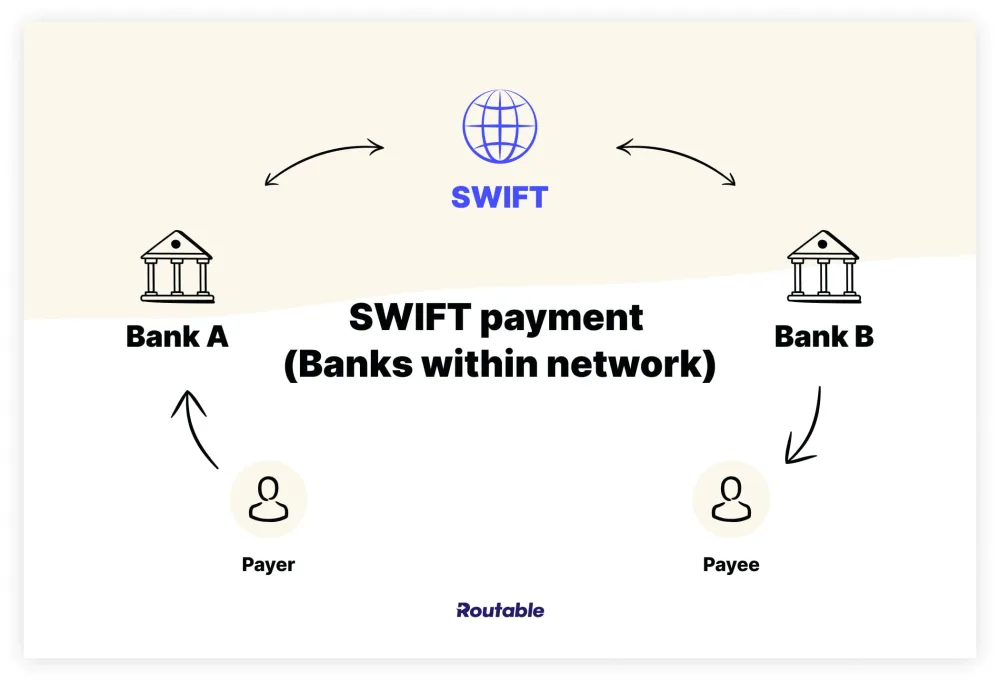
Processing a SWIFT payment typically looks like this:
Collect the recipient’s banking information. Provide your bank with the recipient’s bank account number, usually an IBAN, and their bank’s SWIFT code.
Your bank and the recipient’s bank communicate with one another through the SWIFT network to authenticate the payment. When both the receiving bank and the initiating bank receive the SWIFT message, they’ll begin processing the payment.
Payment is made. The payee receives funds into their account in their local currency.
Advantages of SWIFT
Speed. SWIFT payments can be fast, usually settling within one to five business days. It all depends on whether your bank has direct agreements with international banks or if intermediary banks will be necessary to complete the payment (i.e., one or more of the banks aren’t directly connected to SWIFT).
Easy tracking. Another great feature of SWIFT payments is that transaction details accompany each payment. That means remittance details are included while the payment is processed, making it easier for finance teams to reconcile payments to invoices.
Disadvantages of SWIFT
Hidden costs. SWIFT payment fees aren’t always clear from the outset. There’s an initiating fee that can be upward of $50 depending on your bank. However, if the payment needs to be processed through intermediary banks, there will be additional fees. Best practice is to determine with your vendor ahead of time about who is covering those fees so that there are no surprises when payments are made.
Uncertain lead times. While SWIFT payments can deposit in as quickly as 24 hours, unintended delays in the transfer can slow down the settlement significantly. Similar to potential hidden costs, where international banks do not share direct agreements with SWIFT, intermediary banks are used. The use of one or more intermediary banks will slow payment settlement.
Differences between ACH and SWIFT
Here are the main differences between ACH and SWIFT.
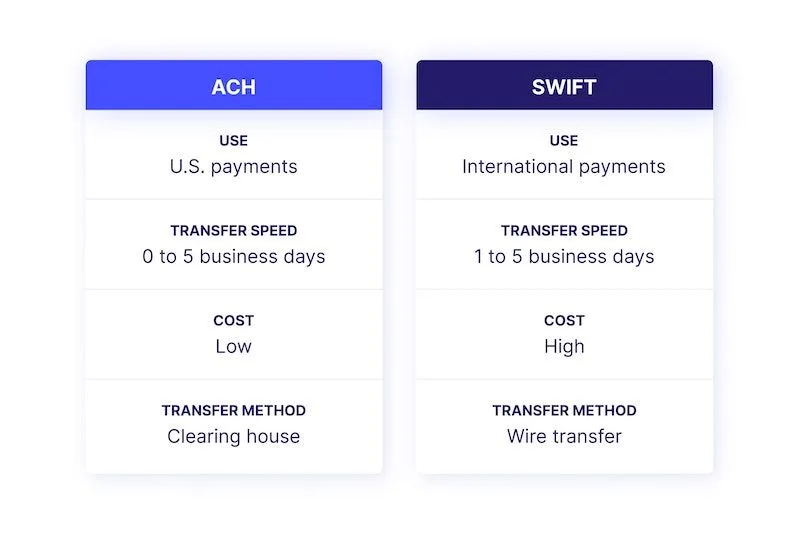
SWIFT is used for international payments and ACH is used domestically
The most important difference between ACH and SWIFT is when they can be used. ACH can only be used for domestic payments within the U.S. So, if your vendors are stateside, ACH is perfect to use. But if you need a payment method for international vendors, SWIFT can be an option to provide that framework.
SWIFT has higher transaction fees than ACH
SWIFT payment fees are much higher than ACH fees. A SWIFT payment can run as high as $50, which means that batch payments can get pretty expensive. Plus, there may be an additional receiving fee depending on what bank is involved.
ACH fees are much lower per transaction. Most standard ACH fees are either a percentage or flat fee per transaction. Percentages range between .05% and 1.5% per transaction whereas flat rates range from $.20 to $1.50 per transaction. There are also higher fees for more premium options like Same Day which can be up to $2 per transaction. Many payment platforms, however, will work with high-volume or mass payout users to bring those costs down.
SWIFT carries a little more risk than ACH
As with any wire transfer, once the payment has been initiated, stopping or reversing the wire transfer is incredibly difficult. Unfortunately, wire fraud is on the rise so it’s imperative to take precautionary steps and ensure that the transaction details you provide are accurate before initiating a wire transfer. ACH payments do provide some assurance that if a payment needs to be stopped, it can be, but there is typically a fee associated with this process.
SWIFT is faster than ACH, sometimes
SWIFT payments may process in as fast as one day. However, as mentioned earlier, the time to settlement becomes delayed depending on the banks involved in the transaction. The more intermediary banks involved, the longer the payment will take to deposit.
Standard ACH payments settle between three and five business days. They are processed in batches that are subject to various cut-off times throughout the day. If a cut-off time is missed, the payment will need to wait until the next cut-off time to be processed. There are faster ACH options like Same Day, but these do carry a premium fee.
About international ACH
Also known as international ACH transfers, payments using this method are made directly to a recipient’s bank account through a clearing system. In the U.S., that clearing system is Nacha. Other countries have similar clearing houses. For example, the Single Euro Payments Area (SEPA) is managed by the European Commission, and the European Central Bank (ECB) is the central bank of the 19 European Union countries.
Learn more: How does international ACH work?
Advantages of international ACH
Just like domestic ACH, international ACH carries low-cost fees and can be initiated digitally. While those fees will always be higher than domestic ACH, they are still significantly lower than processing a wire transfer.
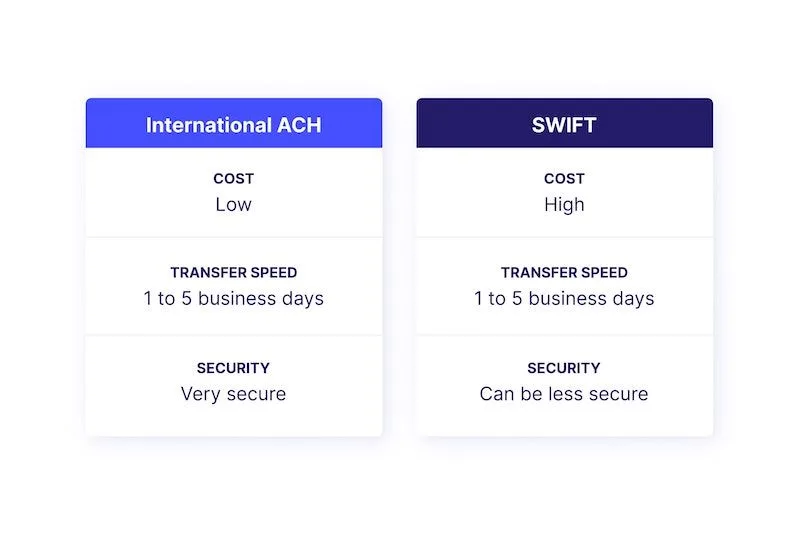
Disadvantages
Not all banks offer international ACH and not all countries have a clearing house to facilitate clearing ACH payments. Some banks do offer International ACH transactions (IAT), but these are not actually a means to transfer funds. IAT, similar to SWIFT, is offered by Nacha to aid in the communication of international transaction details between banks.
Using Routable to send both ACH and SWIFT payments (and international ACH)
Routable offers a number of options for sending digital payments to your vendors and contractors whether they’re in the U.S. or located abroad. Choose from either ACH for your domestic payments or international ACH and SWIFT for your cross-border needs. Send money to over 220 countries with flexible payment options, speeds and currencies while maintaining full visibility into each payment.
Learn more about how Routable supports international payments.
Already a Routable user? Find out what you need to complete ACH and SWIFT payments.
Recommended Reading

International
How does international ACH work?
An international ACH transfer is one way for businesses to send payments globally, and it’s commonly used to pay vendors and suppliers abroad.

International
Understanding form W-8BEN-E
Form W-8BEN-E is a tax document collected by a U.S. based business from foreign entities who receive income from U.S. sources.
